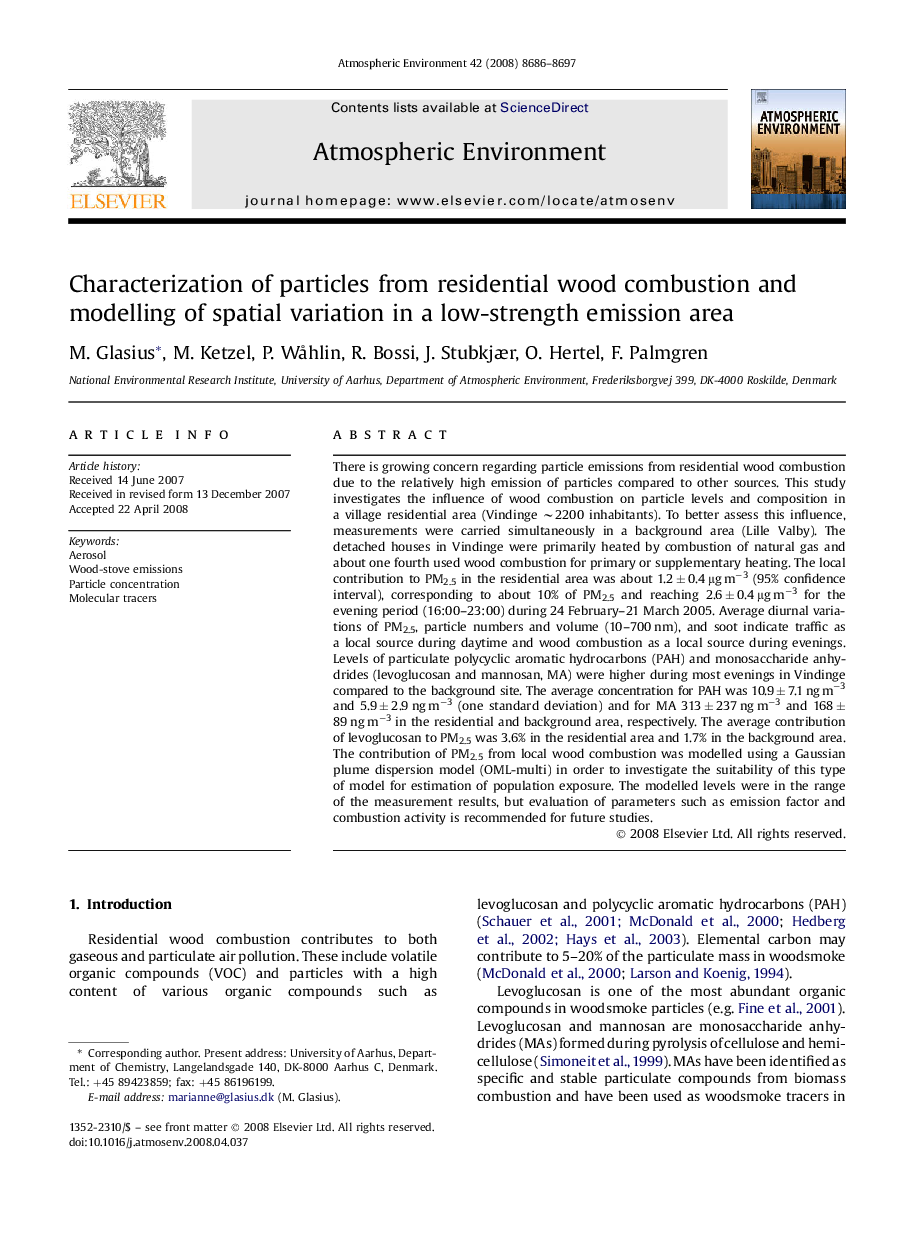| Article ID | Journal | Published Year | Pages | File Type |
|---|---|---|---|---|
| 4442079 | Atmospheric Environment | 2008 | 12 Pages |
There is growing concern regarding particle emissions from residential wood combustion due to the relatively high emission of particles compared to other sources. This study investigates the influence of wood combustion on particle levels and composition in a village residential area (Vindinge ∼2200 inhabitants). To better assess this influence, measurements were carried simultaneously in a background area (Lille Valby). The detached houses in Vindinge were primarily heated by combustion of natural gas and about one fourth used wood combustion for primary or supplementary heating. The local contribution to PM2.5 in the residential area was about 1.2 ± 0.4 μg m−3 (95% confidence interval), corresponding to about 10% of PM2.5 and reaching 2.6 ± 0.4 μg m−3 for the evening period (16:00–23:00) during 24 February–21 March 2005. Average diurnal variations of PM2.5, particle numbers and volume (10–700 nm), and soot indicate traffic as a local source during daytime and wood combustion as a local source during evenings. Levels of particulate polycyclic aromatic hydrocarbons (PAH) and monosaccharide anhydrides (levoglucosan and mannosan, MA) were higher during most evenings in Vindinge compared to the background site. The average concentration for PAH was 10.9 ± 7.1 ng m−3 and 5.9 ± 2.9 ng m−3 (one standard deviation) and for MA 313 ± 237 ng m−3 and 168 ± 89 ng m−3 in the residential and background area, respectively. The average contribution of levoglucosan to PM2.5 was 3.6% in the residential area and 1.7% in the background area.The contribution of PM2.5 from local wood combustion was modelled using a Gaussian plume dispersion model (OML-multi) in order to investigate the suitability of this type of model for estimation of population exposure. The modelled levels were in the range of the measurement results, but evaluation of parameters such as emission factor and combustion activity is recommended for future studies.
